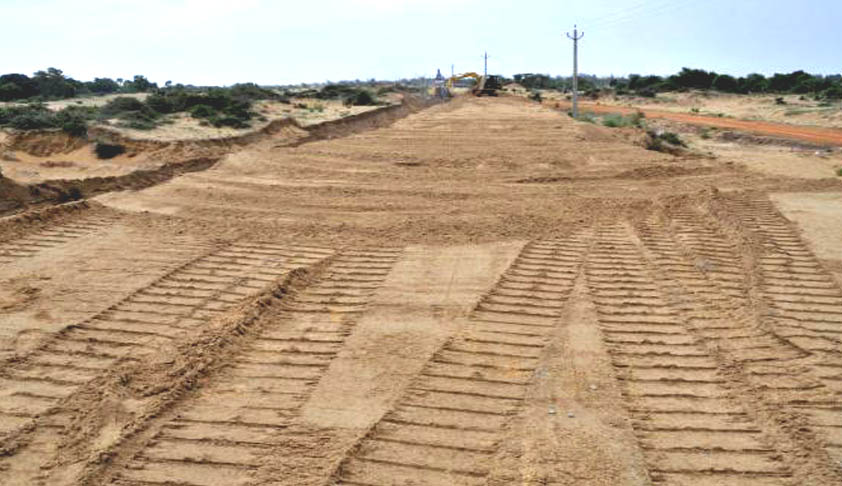The New Land Acquisition Law: A Critical Review
Suchithra Menon and Deva Prasad M
8 April 2014 10:09 AM IST
The new land acquisition law came into force on 1stJanuary, 2014.The Right to Fair Compensation and Transparency in Land Acquisition, Rehabilitation and Resettlement Act, 2013, (LARR Act) replaces the Land Acquisition Act, 1894, which existed from colonial times.The new LARR Act is an attempt to revamp and make the land acquisition process more effective by addressing the major lacunae in the...
The new land acquisition law came into force on 1stJanuary, 2014.The Right to Fair Compensation and Transparency in Land Acquisition, Rehabilitation and Resettlement Act, 2013, (LARR Act) replaces the Land Acquisition Act, 1894, which existed from colonial times.
The new LARR Act is an attempt to revamp and make the land acquisition process more effective by addressing the major lacunae in the old Land Acquisition Act. This article makes an attempt to analyse how the LARR Act tries to improve the land acquisition legal framework incorporating provisions which supposedly are rooted in the right based approach.
The Land Acquisition Act, 1894 was under serve criticism for various reasons which inter alia include: (1) the lack of comprehensive definition of public purpose, which determines the need for land acquisition and (2) lack of proper legal framework to determine adequate compensation for acquired land.Lack of the legal stipulation to take care of rehabilitation and resettlement, discounts the human rights regarding housing, livelihood and other allied rights of the affected people. The Land Acquisition Act, 1894 was seen as a legislation that uses the eminent domain principle, to allow the state to gain access of land by subverting the right to property. From a right based approach the land acquisition legal framework in India was also lacking in:(1) the understanding the impact that land acquisition could cause on the concerned community, (2) bringing in the view of the public affected by the land acquisition by way of public participation through public hearing and (3) acquiring land acquisition by way of informed consent of the land owner. Apart from the above the land acquisition legal framework in India has also been criticised for the lack of effective legal mandate regarding the Rehabilitation and Resettlement of the people affected due to the land acquisition
Legal Stipulation of Rehabilitation and Resettlement Measure
Rehabilitation and Resettlement (R& R) has been made mandatory in this Act. Sec 16 of the Act deals with the preparation for R& R scheme. The Collector is the Administrator for R & R scheme. The functions of the Administrator include conductingof survey for the census of affected family. On the basis of this survey he prepares draft R & R scheme. LARR Act also deals with the provision for R&R committees at the project level involving local people and elected representatives. Separate Commissionerate for R&R at the state level and National Monitoring Committee for R&R at the central level oversee the functioning of R & R mechanism. The adjudicatory function is vested with Land Acquisition, Rehabilitation and Resettlement Authority which is presided over by a Judge.
R & R provisions in the LARR Act are applicable to all land acquisitions by central and state governments. In the case of a land acquisition by a private entity, including companies, R & R provisions will only be applicable if the acquisition is of more than the prescribed limit determined by the state government. Having witnessed problems regarding land acquisition by private companies like Singur land issues, it would have been appropriate to incorporate R& R mechanism in every land acquisition by private person or entities. Giving powers to the state government to determine the limit above which R&R scheme has to be implemented in case of land acquisition by private entity could lead to the failure of the R&R mechanism conceived under this legislation.Moreover land acquisitions under the legislations prescribed in the Schedule IV of the LAAR Act (for example SEZ Act 2005, Railway Act 1989, National Highway Act 1956) are also excluded from requirement of mandatory R & R scheme. The land acquisition for SEZ, railway, highway road expansion and other major activities being excluded from the ambit of R&R scheme, would again adversely impact the effectiveness of R&R scheme.
The implementation mechanism through the authorities prescribed under the LAAR Act clears lacks accountability due to fragmentation. The LARR Act has to be revamped to mandate the accountability of the various administrative mechanism provided for in the legislation. In the present form the rehabilitation and resettlement provisions could end up a mere window dressing without having any effectiveness.
(This is part one of two part series on the new Land Acquisition Law)
Deva Prasad M is Assistant. Professor, TISS Mumbai



